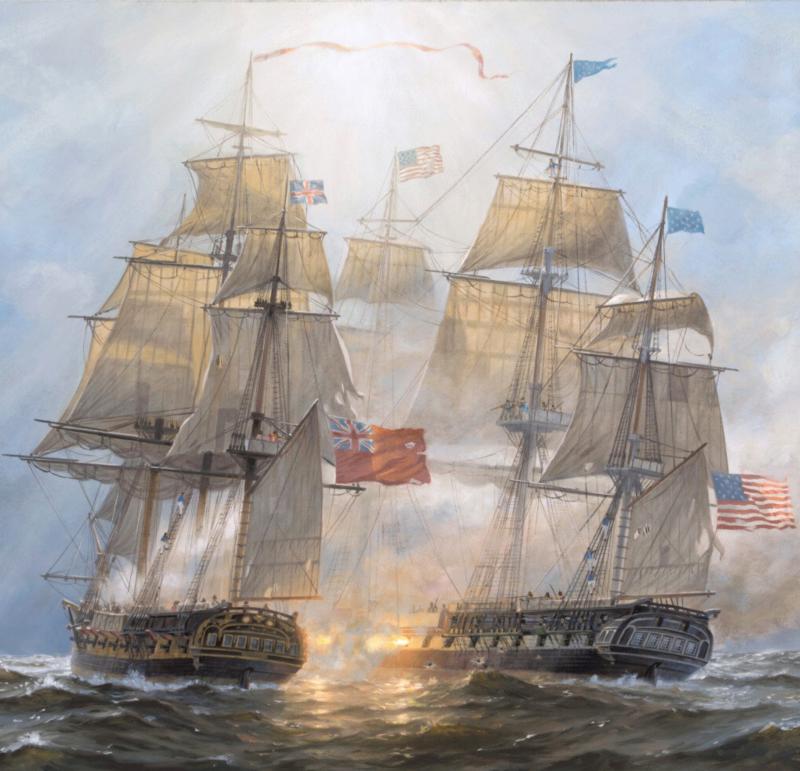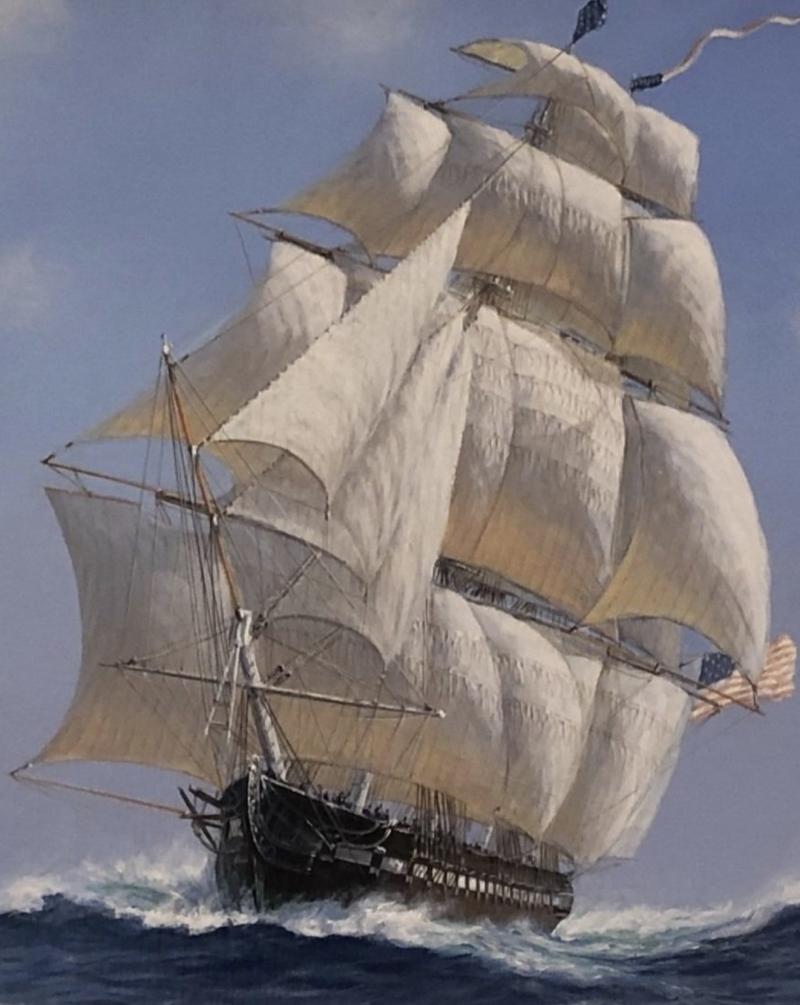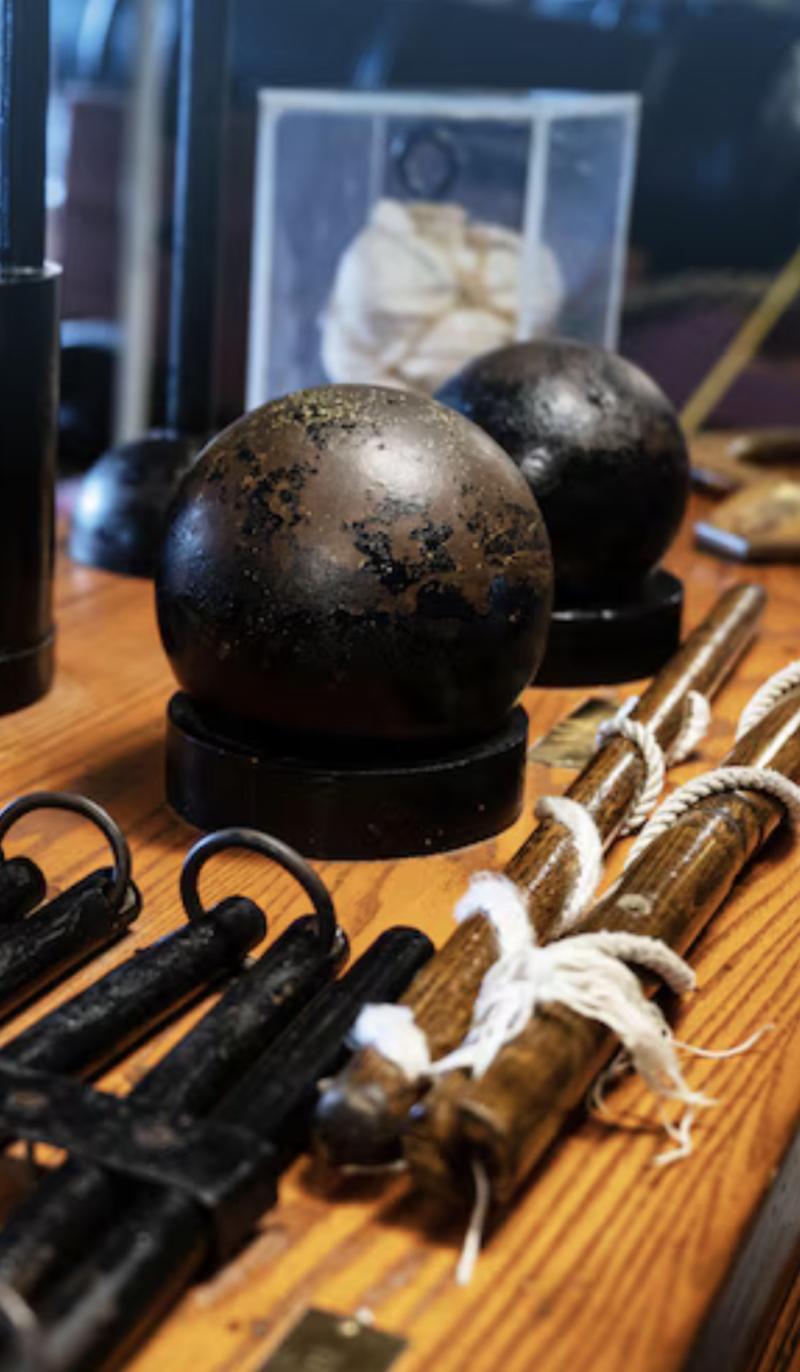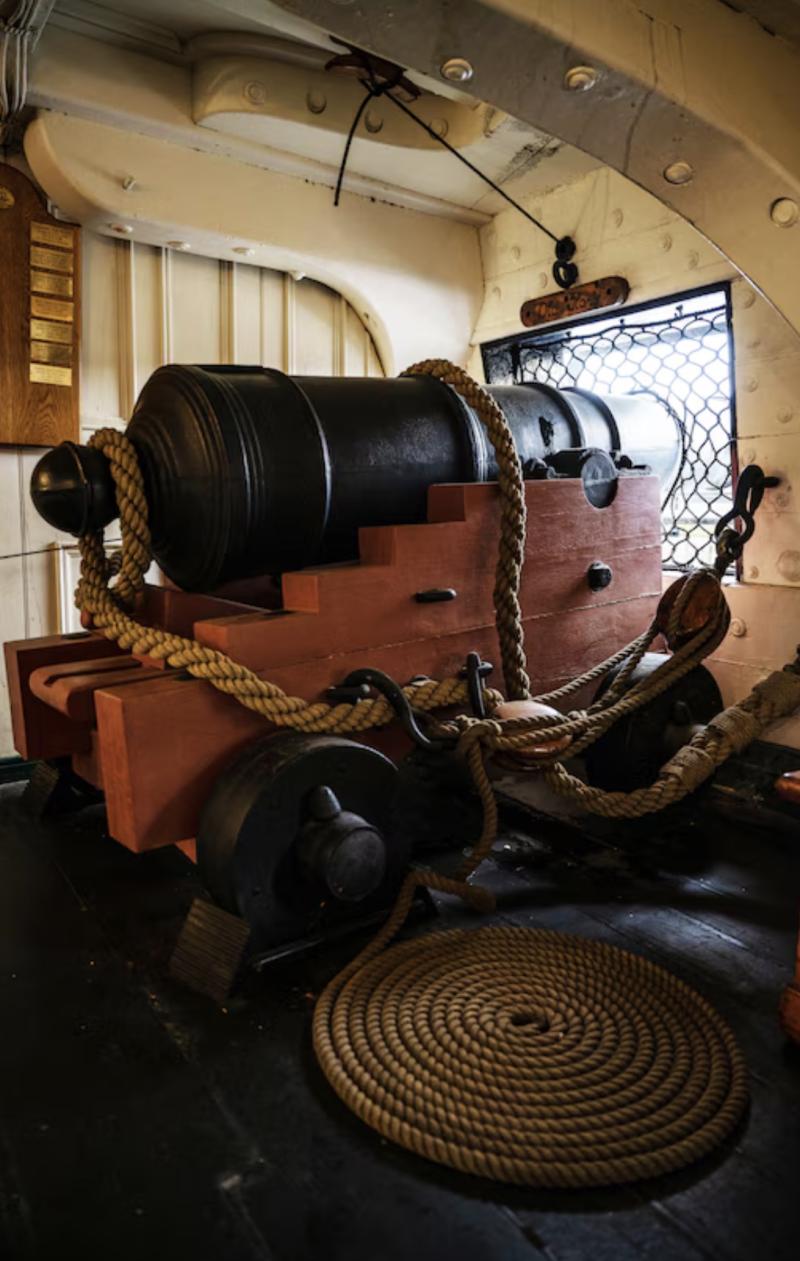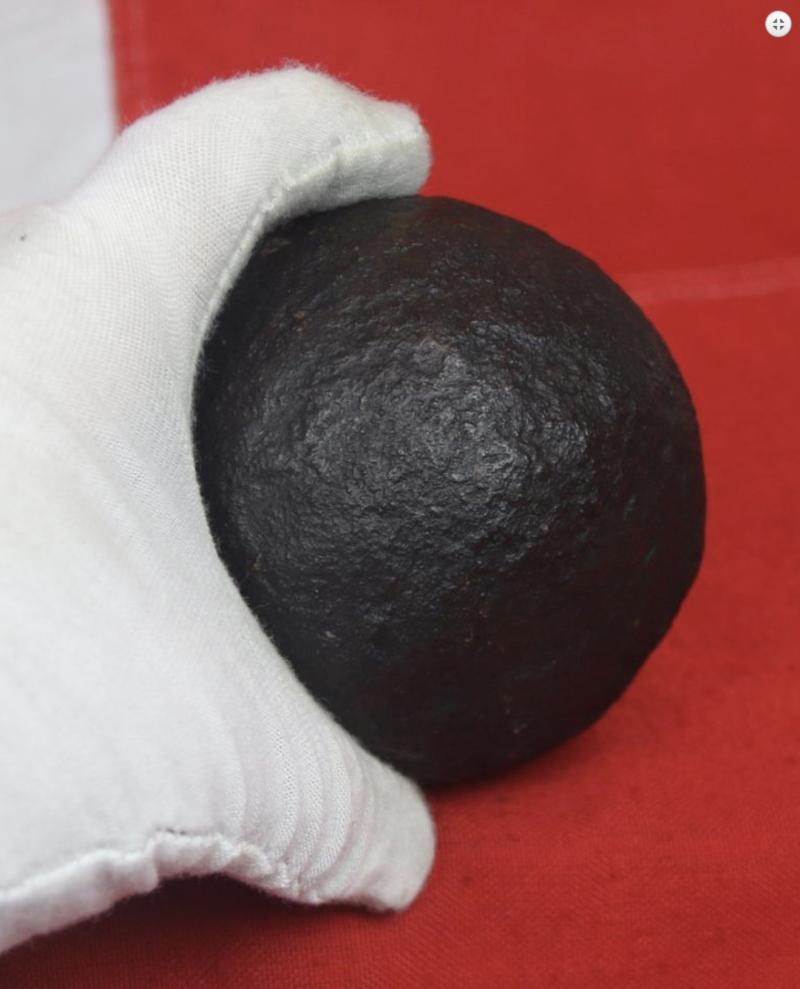A Rare, Superb and Impressive Original British or American 24-Pounder Naval Cannon Ball Souvenir of the War of 1812. The Round Shot Cannon Ball Is Indistinguishable Between US or British Fired 24 Pounders
This cast iron ball, a battle souvenir from the War of 1812, was a form of ammunition that could wreak havoc when shot from a cannon and blasted across the decks or into the hulls of warships in the late 18th and 19th centuries. And the 24 pounder was the most prolific cannon of the US Navy fleet in the War of 1812, and a main or secondary armament of the Royal Navy, depending on the rating of the vessel. This shot was returned to England and unloaded when the HMS Terror and its sister ship returned from the Fort McHenry bombardment, {part of Admiral Cochrane’s fleet} and they removed their unfired 90 pounder 10 inch mortars.
The solid shot balls were made to fit both American and British 24 pounder cannon, so it may have been an unfired British shot aboard a British ship, or, an American ball that impacted once fired by a 24 pounder from an American frigate. There are numerous accounts of ‘at sea’ ship repairs, after naval engagements, where vessels of both sides removed from their hulls impacted shot that failed to penetrate the thick solid oak .
A brief resume of the War of 1812 at Baltimore;
With Washington in ruins, the British next set their sights on Baltimore, then America’s third-largest city. Moving up the Chesapeake Bay to the mouth of the Patapsco River, they plotted a joint attack on Baltimore by land and water. On the morning of September 12, General Ross’s troops landed at North Point, Maryland, and progressed towards the city. They soon encountered the American forward line, part of an extensive network of defences established around Baltimore in anticipation of the British assault. During the skirmish with American troops, General Ross, so successful in the attack on Washington, was killed by a sharpshooter. Surprised by the strength of the American defences, British forces camped on the battlefield and waited for nightfall on September 13, planning to attempt another attack under cover of darkness.
Meanwhile, Britain’s naval force, buoyed by its earlier successful attack on Alexandria, Virginia, was poised to strike Fort McHenry and enter Baltimore Harbour. At 6:30 AM on September 13, 1814, Admiral Cochrane’s ships began a 25-hour bombardment of the fort. Rockets whistled through the air and burst into flame wherever they struck. Mortars fired 10- and 13-inch bombshells that exploded overhead in showers of fiery shrapnel. It is said many exploded too soon as the fuses were set too short, which created the firework effect. Major Armistead, commander of Fort McHenry and its defending force of one thousand troops, ordered his men to return fire, but their guns couldn’t reach the enemy’s ships. When British ships advanced on the afternoon of the 13th, however, American gunners badly damaged them, forcing them to pull back out of range. All through the night, Armistead’s men continued to hold the fort, refusing to surrender. That night British attempts at a diversionary attack also failed, and by dawn they had given up hope of taking the city. At 7:30 on the morning of September 14, Admiral Cochrane called an end to the bombardment, and the British fleet withdrew. The successful defense of Baltimore marked a turning point in the War of 1812. Three months later, on December 24, 1814, the Treaty of Ghent formally ended the war. "The Star-Spangled Banner" is the national anthem of the United States. The lyrics come from the "Defence of Fort M'Henry", a poem written on September 14, 1814, by 35-year-old lawyer and amateur poet Francis Scott Key after witnessing the bombardment of Fort McHenry by British ships of the Royal Navy in Baltimore Harbour during the Battle of Baltimore in the War of 1812. Key was inspired by the large U.S. flag, with 15 stars and 15 stripes, known as the Star-Spangled Banner, flying triumphantly above the fort during the U.S. victory. During the bombardment, HMS Terror and HMS Meteor provided some of the "bombs bursting in air".
Long guns, so-called because of their longer barrels, loaded with 24-pound balls (or shot) were referred to as “24-pounder long guns.” The weight of the ball combined with the length of the gun was an efficient and effective weapon used by many maritime nations at the time. Larger ships-of-the-line in the Royal Navy carried such guns as their secondary battery, but both British and American large frigates carried the 24-pounders as their primary battery.
A naval 24-pounder, which was the primary gun on board early U.S. Navy vessels during the Revolutionary War and the War of 1812. The U.S.S. Constitution carried thirty 24-pounder guns on her gun deck below the spar deck, which carried twenty-four 32-pounder carronades. Photo 3 in the gallery is from aboard the USS Constitution, where one can see, likely, a 30 pounder ball alongside a 24 pounder. The guns were mounted in naval carriages, which were sometimes painted green, black, red, or brown, but more than likely left in their natural wood, but treated with a protective varnish that had a slight red-brown hue. All 24-pounder cannon made in the United States were cast from iron as tin and copper were not assessable natural resources at the time, so they were painted black to prevent rust. Even the bores were painted black with a scrub brush on a rod. At sea they were cleaned and painted often. Iron 24-pounder guns actually weighed some 300 pounds lighter than their bronze or brass contemporaries. The dimensions for a heavy 24-pounder are: Length: 9 ft. 6 in.; Weight: 5,488 pounds; Calibre of gun: 5.83 in.; Calibre of projectile: 5.54 in.; Weight of charge: 4 to 6 pounds; Types of projectiles: 24 pound round shot, grape shot, chain shot, and case or canister shot; Range: 300 - 400 yards.
Code: 25852
645.00 GBP

